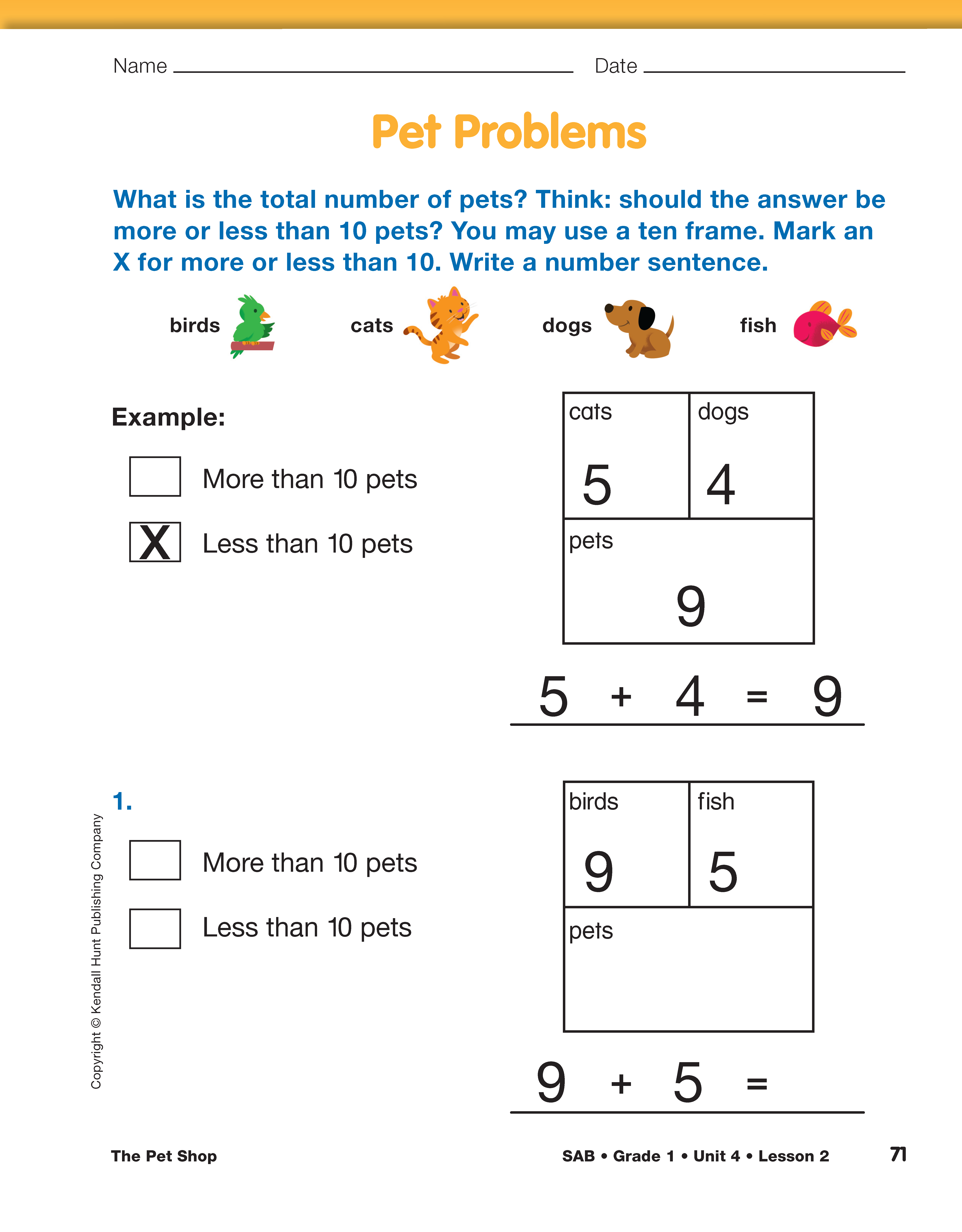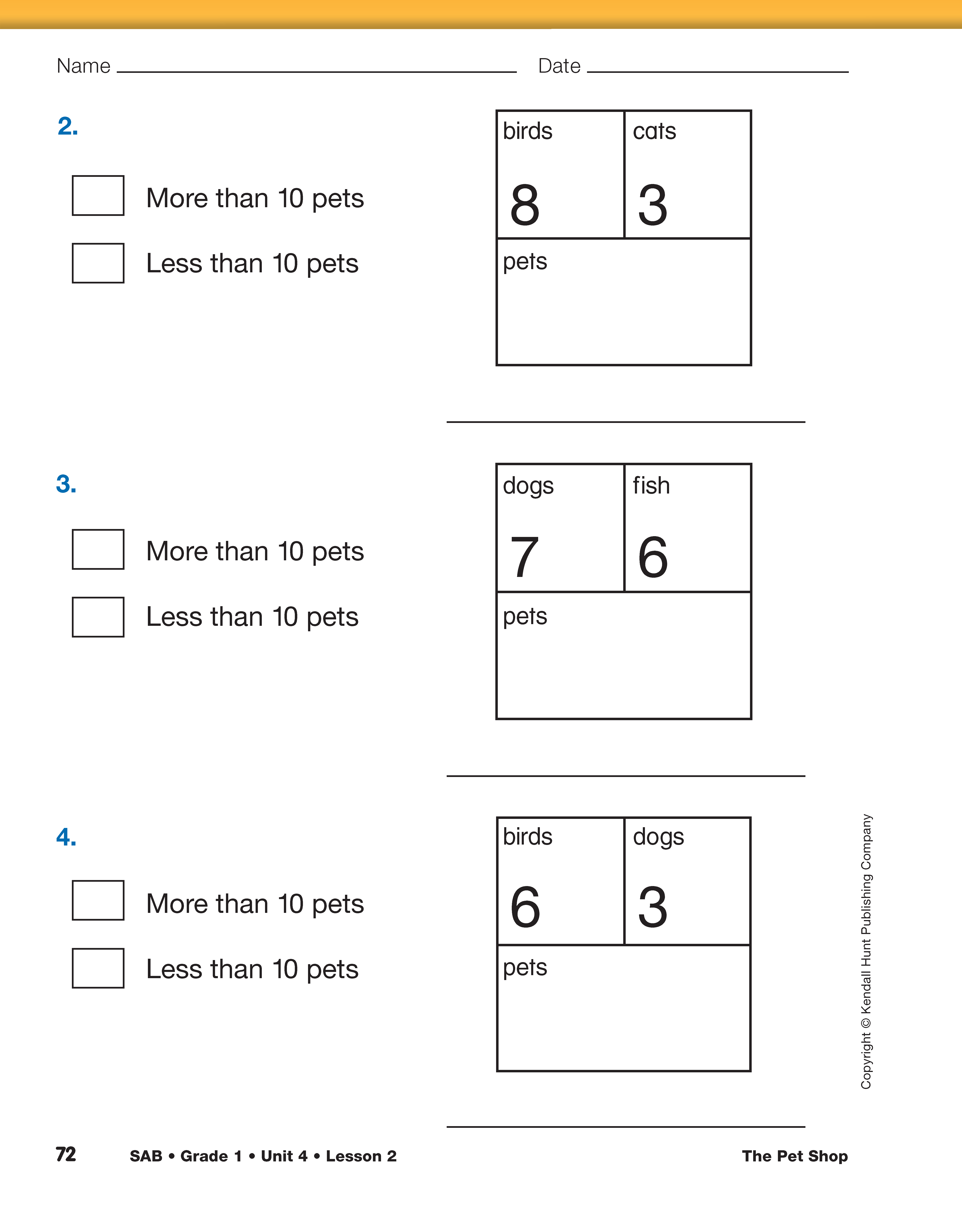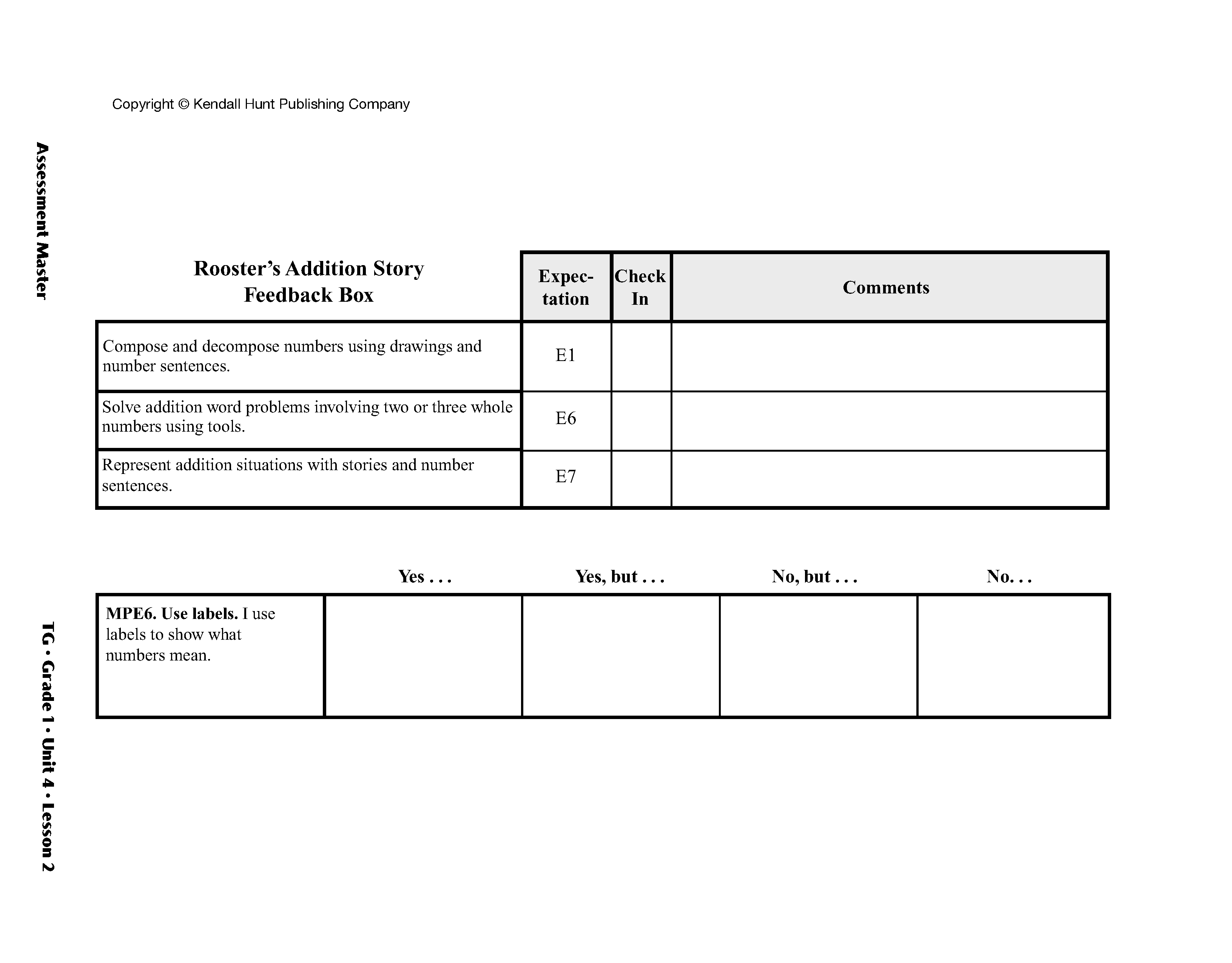Upon completion, choose problems and review the
students' work on the page by asking:
- Should you and your partner get the same answer
using different tools? Why or why not? (Yes. There should be the same number of pets no matter how you find it.)
- What does each number in this number sentence
stand for?
- What keystrokes did you use for this problem?
- How did you decide if your answer should be more
or less than ten?
- Were all of your answers reasonable? What did
you do if they did not make sense?
Assign the Rooster's Addition Story Assessment
Master for students to complete individually.
Remind students to use labels to show what the
numbers in their number sentences mean. Students
can use pictures or words when labeling.
Assign Home Practice Parts 1–2 as homework after
Part 2 of the lesson.
Read Rooster's Off to See the World by Eric Carle aloud to the
class before assigning the Rooster's Addition Story
Assessment Master. While the story is not a prerequisite for
completing the assessment task, it does provide context for
many addition situations. A rooster sets off to see the world
and is joined by two cats, three frogs, four turtles, and
five fish. After reading the book, addition problems such as,
"How many animals in all set out to see the world?" can be
created. Allow the use of counters, cubes, drawings, or calculators to solve the problems.

Use the Rooster's Addition Story Assessment Master with the
Feedback Box to assess students' progress toward the following Expectations:
- Compose and decompose numbers using drawings and
number sentences [E1].
- Solve addition word problems involving two or three
whole numbers using tools [E6].
- Represent addition situations with stories and number
sentences [E7].
This assessment can also be used to assess students' abilities
to use labels [MPE6].


















